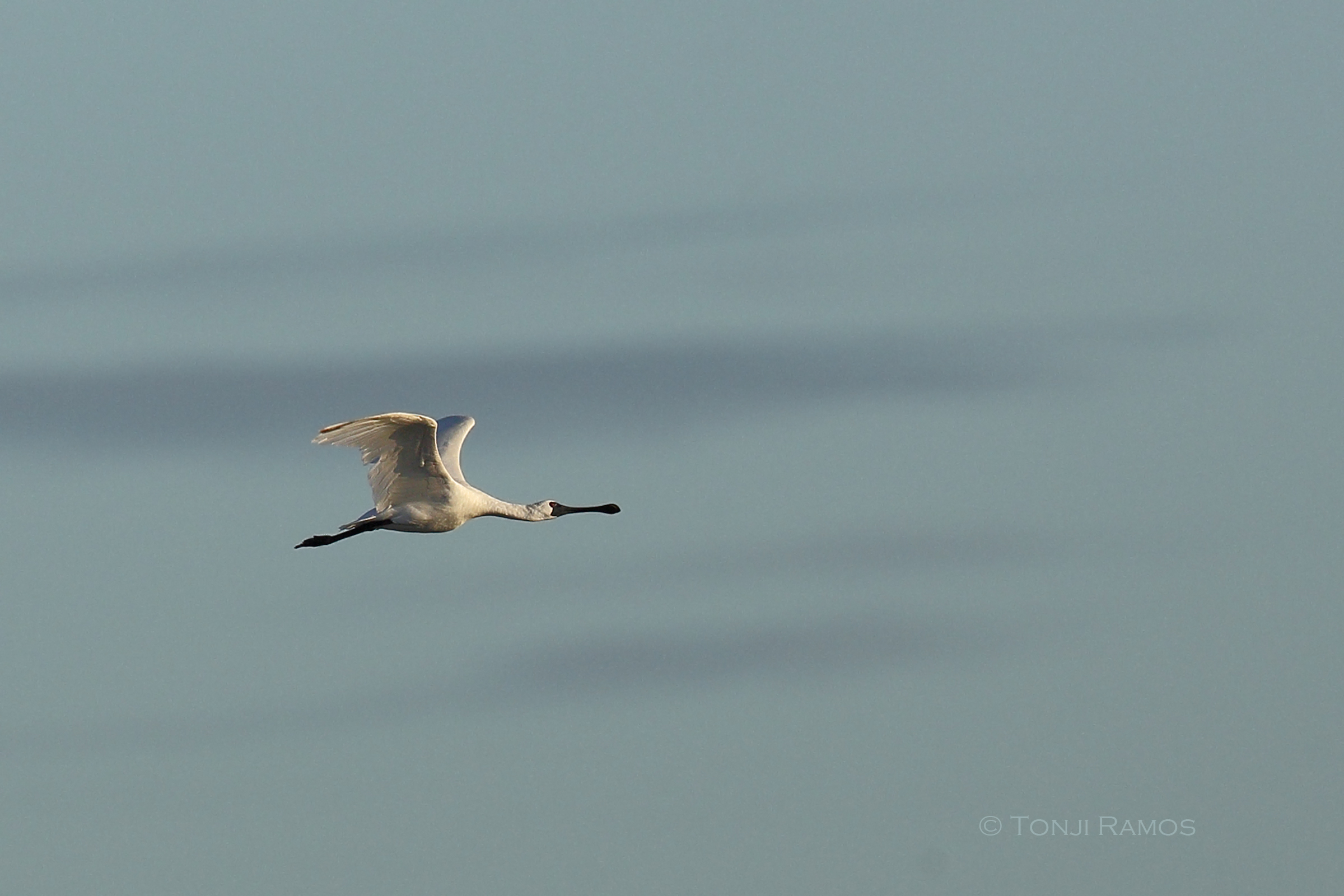Filtered By: Scitech
SciTech
Rare Black-faced Spoonbills spotted in Candaba swamp
TEXT AND PHOTO By SYLVIA RAMOS
The birds were supposed to be in Hong Kong or the Chinese mainland. But here they were in Candaba, Pampanga, their long black spoon-shaped bills unmistakeable, as well as their faces covered in black skin instead of avian feathers: the Black-faced Spoonbills. Two of them.
Wild Bird Club of the Philippines (WBCP) members Linda Gocon and Brian Ellis spotted the two Black-faced Spoonbills in Candaba on December 19, as they were showing around a group of expatriate missionaries the birds of Candaba. They noticed two larger birds that were mixed among a faraway flock of smaller Black-winged Stilts. Here, unmistakeably, were the Spoonbills.
The Black-faced Spoonbill (Platalea minor) is a 27-inches high migratory wading bird, long-legged and white, named for its long black spoon-shaped bill that widens out to a rounded out, flattened, spoon shape at the tip.

According to the IUCN Red List there are estimated to be less than 2,700 Black-faced Spoonbills worldwide. They are also listed as endangered and one of the protected species in China, Taiwan, North Korea, South Korea and Japan.
WWF Hong Kong had reported that only 30 or so Spoonbills are known to breed each year. During the year the birds travel from their breeding sites in North and South Korea and China to their wintering grounds mainly in Taiwan, Hong Kong, the Chinese mainland and Hainan Island. Along the way to their wintering sites, they use key stopover sites in China. Occasionally, a few birds have been found in Thailand, the Philippines, Macau and inland China.
Why were the birds, so rarely seen in the country, going astray from their usual migration routes?
While the Black-faced Spoonbill is threatened, like other avian species, by habitat destruction and pollution from pesticides, unusually cold, unseasonal weather in parts of Asia, that may be brought on by climate change, appears to be driving migratory birds to warmer climates outside their usual range.
In November, for example, a Black-faced Spoonbill was spotted at the Olango Island Wildlife Sanctuary in Cebu.
Another sighting on December 1 was by Laoag-based WBCP member Richard Ruiz, who spotted a Mandarin Duck. It was a sighting that proved to be the first time one of the ducks was reported in the wild, in the country. For the past five years, Ruiz has been monitoring a private area in Laoag that is frequented by migratory ducks and birds. The Mandarin Duck sighting is another sign of migratory birds going off their usual path.
Last December 19, WBCP member Tonji Ramos spotted a Black-necked Grebe at the same site.
While the Mandarin Duck and Black-necked Grebe are not rare or listed as vulnerable, they are rarely seen in the Philippines. — KDM, GMA News
Tags: birds, threatenedspecies
More Videos
Most Popular



